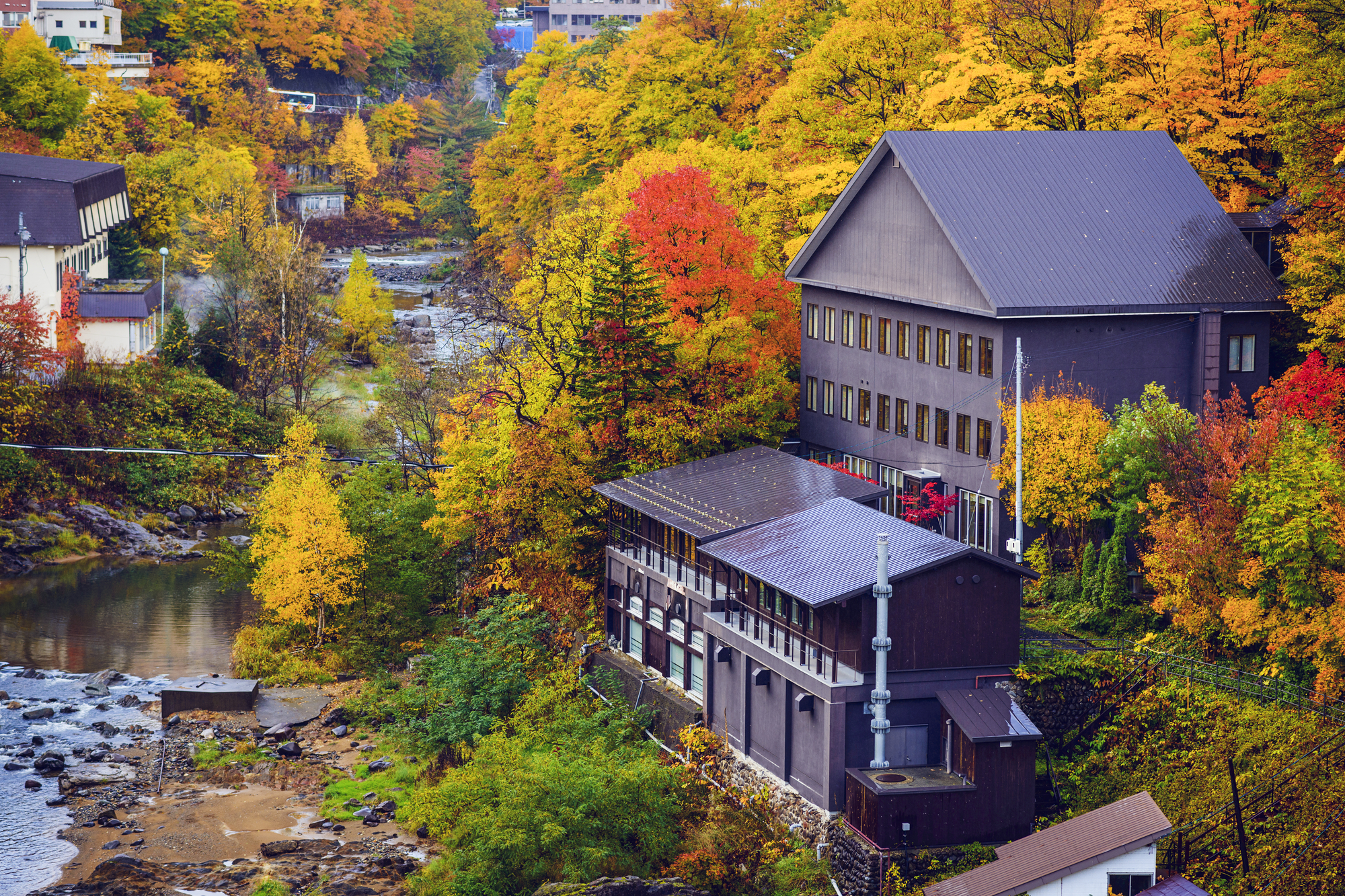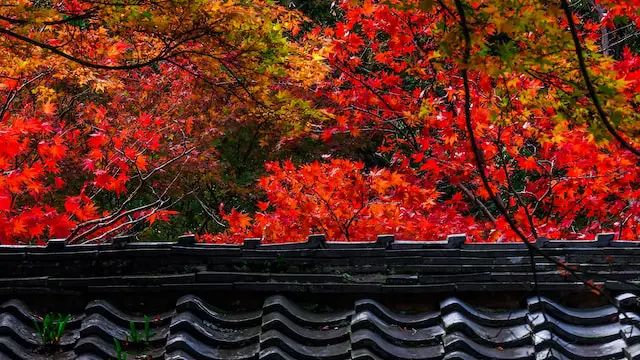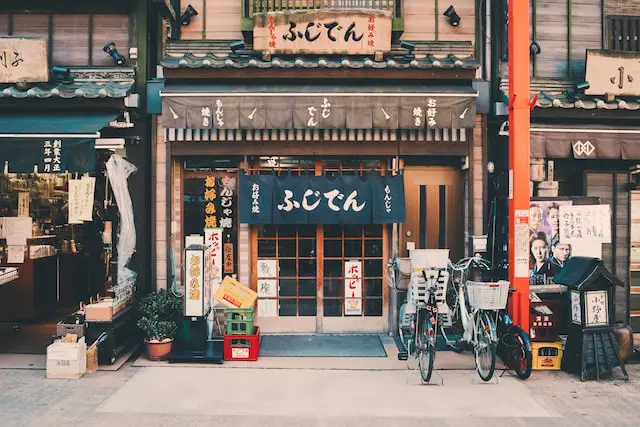Japan carries a rich legacy of architectural merit, weaving a narrative that dexterously marries tradition and modernity. The story of Japanese architecture unfurls a delicate, yet astutely structured world, where buildings don’t merely exist in nature but are an extension of it. At the heart of this tale are the iconic Japanese buildings, each serving as a testament to the enduring spirit of craftsmanship, precision, and an unyielding respect for the natural ambience.
Perhaps most striking is the way Japanese architecture harmoniously melds form and function, creating structures as practical as they are pleasing to the eye. Equally notable is how these buildings thrive in their interplay with their surroundings, upholding the axiom that beauty flourishes in coexistence, not dominance. So, as we embark on this exploration of the enchanting world of Japanese architectural grandeur, let us pay homage to both its cherished traditions and daring modernity.
The Origins and Influences of Japanese Architecture
The rich tapestry of Japanese architecture has been spun over centuries, drawing influences from many cultures and civilizations. The origins of Japanese architecture cascade back to the Yayoi era, a time of simple pit houses constructed of wooden posts and thatch.
Delving into Japan’s architectural history, one acknowledges the influential roles of Chinese and Korean architecture. The ornate pagoda structures and the vibrant colors of these neighboring nations were integrated into Japan’s own style during the Asuka and Nara period.
The advent of Buddhism from China and Korea around the 6th century fortuitously coincided with the flourishing of Japanese architecture. Pulsating with spirituality, the grandeur of Buddhist temples began to emerge. Complex wooden structures like the Horyu-ji Temple characterize this era, notable for their sophisticated joinery techniques and towering pagoda structures.
Later, during the Meiji Restoration in the late 19th century, Western influences started to make their mark on Japanese architecture. European and North American design elements became infused with the traditional Japanese aesthetic, propelling Japanese architecture into a new and fascinating realm of design.
Cultural influences seeped into Japanese architecture, coating it with layers of complexity and intrigue. This blend of indigenous tradition, and Chinese, Korean and Western influences has manifested in a unique architectural identity, a perfect harmony of past and present, east and west, tradition, and modernity. It is the intricate narrative of these influences that feeds the profound allure of Japanese architecture today.
Traditional Japanese Architecture: Shrines and Temples
Japan is renowned for its sublime approach to design and beauty. Nowhere is this more apparent than in its iconic temples and shrines. Here, the traditional Japanese woodworking skills, coupled with the use of natural materials, are showcased in spectacular ways.
The Kinkaku-ji, also known as ‘The Golden Pavilion’, is a prime example illustrating traditional Japanese aesthetics. Its glittering exterior, cloaked in gold leaf, reflects an ethereal image onto the tranquil pond at its base. The pavilion captivates visitors with its balance of opulence and simplicity. This is Japanese architecture in its purest form; symbolizing earthly desires in its first level, aspiring towards enlightenment in its top tier.
On the other hand, the colossal Todai-ji Temple, or ‘Great Eastern Temple’, signifies a different facet of traditional architectural prowess. Known as home to the world’s largest bronze statue of the Buddha Vairocana, the Buddhist temple is not only a feat of religious reverence, but also a tribute to Japan’s ancient wood-joining tradition in the midst of the modern world.
These architectural marvels are a testament to Japan’s centuries-old traditions and the nation’s profound connection with its natural environment. Each shrine and temple is not simply a place for worship, but a celebration of the interactions between culture, spirituality, and landscape. This interplay is the true essence of traditional Japanese architecture.
For any intrepid traveler, exploring these traditional shrines and temples will profoundly reveal the high artistic and cultural value of Japan’s architectural history. They are a must-visit, providing a deep and magnificent insight into Japan’s rich past and providing context for its thriving present.
Japanese Castles: Pride and Elegance
Dominated by an impressive blend of architectural prowess and symbolic significance, Japanese castles are an integral part of the country’s rich history. These grand structures, such as the iconic Himeji Castle and Matsumoto Castle, showcase the architectural sophistication of feudal Japan.
Himeji Castle, often referred to as ‘White Heron Castle’, exhibits an undeniable elegance that has stood the test of time. It’s recognized for its brilliant white exterior, complex arrangement of towers, and defensive mechanisms, offering visitors a step back in time to an era of samurai and shoguns.
Contrastingly, Matsumoto Castle, known as the ‘Crow Castle’ due to its unique black exterior, displays a different kind of allure. Its imposing multistoried keep, complete with an intricate network of interconnected buildings, is a marvel to behold. The castle is notable for its moat and stone walls – defensive features that emphasize its strength and invulnerability.
One consistent aspect of ‘Japanese castles’ is the way they blend form with function. From intimidating stone bases that deterred enemy attacks to multi-storied keeps for observing incoming threats – every feature had a purpose. Yet, they still retained an aesthetic appeal, with elegant roofs and artful designs that radiated an unmistakable Japanese grace.
Hence, a trip to Japan is incomplete without exploring these historical marvels that offer a window into ‘Japan’s architectural history’. The castles capture the very soul of the era they were built in, portraying a grand narrative of power, survival, and beauty. So, when you ‘visit Japan’, don’t forget to include these iconic Japanese castles in your architectural exploration!
Indigenous Architectural Designs: The Distinctiveness of Machiya and Minka Houses
When it comes to traditional Japanese residential architecture, two styles particularly stand out – Machiya and Minka houses. These designs are a living testament to Japan’s architectural ingenuity, reflecting a deep understanding of craftsmanship, nature, and functionality.
Machiya, often referred to as ‘merchant houses,’ are urban homes traditionally found in Japanese cities. Narrow and deep with a distinctive tiled façade, a Machiya offers a fascinating glimpse into the way Japanese city dwellers used to live. Walking through Kyoto’s preserved districts filled with Machiya houses is like stepping back in time.
Minka houses, on the other hand, reveal the everyday life of Japan’s rural side. Minka, or ‘houses of the people,’ are traditional countryside dwellings characterized by their thatched and tiled roofs, large hearths, and complex wooden structures. They speak volumes about Japan’s traditional agrarian lifestyle.
Despite differences in urban and rural settings, both styles serve as a remarkable reflection of Japan’s architectural evolution, having adapted and evolved to fit the changing lifestyle needs while maintaining their intrinsic traditional charm. So, consider taking an architectural tour when visiting Japan, as these Machiya and Minka houses are indeed marvels that offer valuable insights into Japan’s cultural fabric.
The SEO terms used in this article are ‘Machiya houses’, ‘Minka houses’, and ‘traditional Japanese residential architecture’.
Modern Japanese Architecture: Fusion of Tradition and Innovation
In our journey through the evolution of Japanese architecture, we now turn to the eye-catching fusion of tradition and innovation found in recent design. Walking down the streets of any urban Japanese city, one can easily spot the seamless blend of old and new.
One of the most iconic modern structures in Japan, the ‘Tokyo Skytree‘, stands as the world’s tallest freestanding broadcasting tower. Its design, whilst futuristic, draws from the philosophy of traditional Japanese architecture – the balance of earth and sky.
On the contrasting spectrum of scale, the Prada Building in Aoyama, designed by Swiss architects Herzog & de Meuron, resembles a crystal, integrating an all-glass exterior with interior spaces that echo ancient Japanese ideas of multi-functionality. It reflects the mindset of merging tradition with modernity.
Moving away from the bustling city, we find ourselves in Onomichi, home to the Ribbon Chapel. NAP Architects designed this wedding chapel as two swirling staircases that join at the top, symbolizing the union of two individuals. Meanwhile, the overall form, set amidst lush landscapes, harks back to the undying connection with nature central to Japanese aesthetics.
Modern Japanese architecture, truly, is not just about innovative structures or futuristic aesthetics but is deeply rooted in traditional elements. This blend provides a unique juxtaposition that continues to shape Japan’s urban landscape.
We invite you to experience this fascinating fusion of ‘tradition vs modernity’ – an essential part of the architectural journey in Japan.
Japanese Landscape and Garden Design
The magical realm of Japanese garden design is a harmonious blend of aesthetics and spirituality. These tranquil landscapes are often seen as natural works of art, offering a serene space for contemplation and relaxation.
One of the most captivating gardens in all of Japan is the Ryoan-ji Zen Garden. This garden is a sublime example of a ‘karesansui’ or ‘dry landscape’ and invites meditation on its seemingly simple, yet profoundly meaningful array of rocks and white sand. Here, the garden components are a metaphor for nature, conveying a complex philosophy with minimalist aesthetics.
Apart from dry landscapes, other styles are also indicative of the beauty of tradition-infused nature. Taking for instance the Kenroku-en, located in Kanazawa. This space beautifully adheres to the six attributes of a perfect landscape: spaciousness, serenity, venerability, scenic views, subtle design, and water features. Its profound beauty, brimming with ponds, streams, and a diverse array of flora, serves as a testament to the time-honored artistry of Japanese garden design.
Key principles in these garden designs often include ‘shakkei’ or ‘borrowed scenery’, where surrounding landscapes are incorporated into the design to make the garden seem more extensive and interconnected with nature. The influence of Zen philosophy, emphasizing the harmony and balance between man and nature, is also a defining feature of these captivating sceneries.
Japanese gardens resonate with an incredible depth and complexity, offering us a unique, holistic perception of beauty and serenity. Take the time to sit, to observe, and to lose yourself in the meditative harmonies of these captivating landscapes on your next visit to Japan.
Conclusion
Our architectural journey through Japan reveals an alluring fusion of tradition, style, and modernity. This fascinating blend is what makes Japanese architecture so captivating, a testament to Japan’s profound history interwoven with commitment to progress.
The beauty and intricacy of iconic Japanese buildings extend from the grandeur of historic structures like Kinkaku-ji and Himeji Castle, to the modest elegance of traditional machiya and minka houses. Furthermore, the modern marvels of Tokyo Skytree and Prada Building accentuate the limitless potentials of architectural design.
Yet the allure of Japan’s architectural journey doesn’t end with the buildings. The tranquil Zen gardens, such as the peaceful Ryoan-ji Zen Garden and the captivating Kenroku-en, effortlessly incorporate the natural landscape into their design. These places offer a serene sanctuary where visitors can appreciate the country’s dedication to balance and precision in design.
Every corner turned on your architectural tour in Japan becomes a doorway to a new understanding of this remarkable culture. Seizing the chance to visit Japan not only allows you to explore the radiant cityscapes and iconic structures but also gives you a glimpse into the country’s soul. Whether you’re an admirer of tradition, an enthusiast for modernity, or a lover of nature, Japanese architecture has a story for you.
So, pack your bags and prepare for an unforgettable journey. Experience first-hand the legacy and wonder encapsulated within the walls of these extraordinary feats of Japanese architecture. No matter where you find yourself in this beautiful country, the architectural gems found will surely inspire a profound sense of awe.




